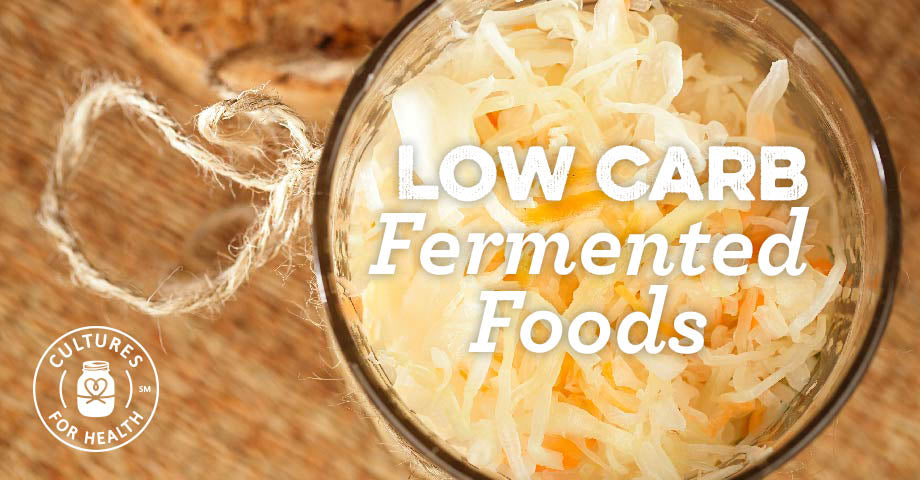
Along with several other dietary models, many people area choosing to restrict carbohydrates in their meal planning. An important factor of any menu program is the inclusion of plenty of nutrient-dense foods.
However, some people on low-carb programs tend to shy away from fermented foods, in order to keep their carbohydrate count low. This isn’t necessary, though.
What are the main foods to avoid when eating low-carb?
The main food to avoid if eating low-carb is sugar, in its various forms. This includes white and brown sugar, honey, maple syrup, other natural sweeteners, and even high-sugar fruits.
Next on the list to avoid would be starches. These include all grains, potatoes, some beans, and some starchy vegetables like carrots and beets.
Now, to be clear, pretty much all foods contain carbohydrates, but some have much more than others. A carrot, for instance, contains more carbs than a lettuce leaf but would be a much better choice than a piece of bread for those restricting their carbohydrates.
HOW FERMENTATION LOWERS THE CARB COUNT OF FOODS
One of the beauties of the fermentation process is that it actually lowers the carbohydrate count of the food you are fermenting.
Fermentation occurs when bacteria feasts off of the carbohydrates found in a food. In making kombucha that food is the sugar. In making sourdough bread that food is the flour. In making sauerkraut that food is the carbohydrates in the cabbage. In making yogurt that food is the lactose naturally occurring in milk.
In fermentation, the sugars and starches are eaten up by the bacteria cultures, and converted to lactic acid, carbon dioxide, and more bacteria. So, by definition, fermentation is a process one could use to lower the dietary carbohydrate levels found in various foods.
It is difficult to know the exact carbohydrate count of a fermented food, but there is one principle to keep in mind if you are concerned about the carbohydrates in your fermented foods:
The longer the fermentation time, the more carbohydrates eaten up by the organisms, the more sour the ferment, the lower the dietary carbohydrate count.
So by controlling the culturing, you control the carbohydrates found in fermented foods and in this way you can eat low-carb and enjoy many fermented foods.
LOW CARB FERMENTED FOODS
Kombucha
Allow it to ferment a bit longer and achieve a nice tang before consuming. A second ferment will further reduce sugars and develop flavor.
Water Kefir
Allow this also to ferment longer until good and tart. In order not to stress the grains, remove them after 48 hours, and continue with a second ferment to further reduce sugars.
Yogurt
Your best bet to ensure that almost all of the lactose is used in culturing is to allow it to ferment for a full 24 hours (thermophilic cultures) or 48 hours (mesophilic cultures). To maintain the culture's viability, remove and refrigerate some of the yogurt after the standard culturing time.
Milk Kefir
Allow to ferment for the full 24 hours or even longer. A second ferment without the grains will reduce lactose even further.
Hard Cheeses
While all cultured cheese will be lower in carbohydrates than the milk it started as, hard cheeses like cheddar will have almost no carbohydrates as opposed to a softer cheese like ricotta.
Fermented Vegetables
Any fermented vegetable, including beets and carrots, can be considered low in carbohydrates. Examples include sauerkraut, pickles, salsas, and carrots.
Fruit Chutneys
While you might want to limit the amount of fruit you eat on a low-carb diet, fermented fruit chutneys are naturally lower in their natural sugars than their non-fermented counterparts. Try thisfermented apple chutney.
KEEP IN MIND
One thing to keep in mind, when considering a low-carb diet, is that fermented foods can be helpful in breaking down any of the foods you consume, whether proteins, fats, or carbohydrates. This may be a factor in determining whether a fermented food contains carbohydrates and whether or not to eat it.
















